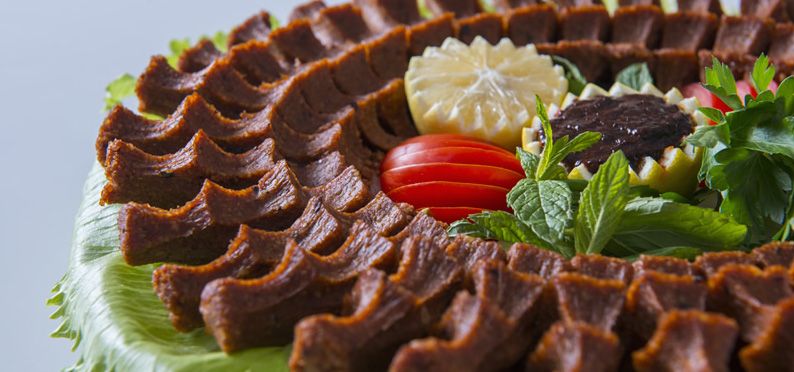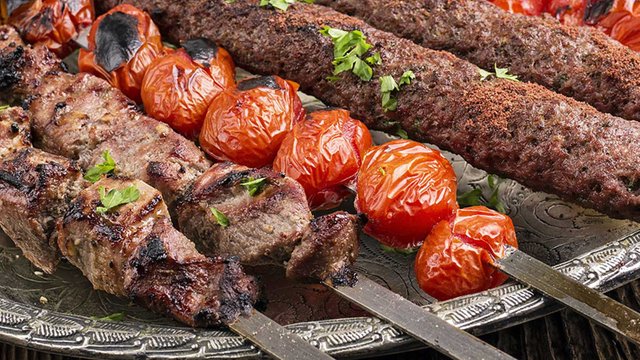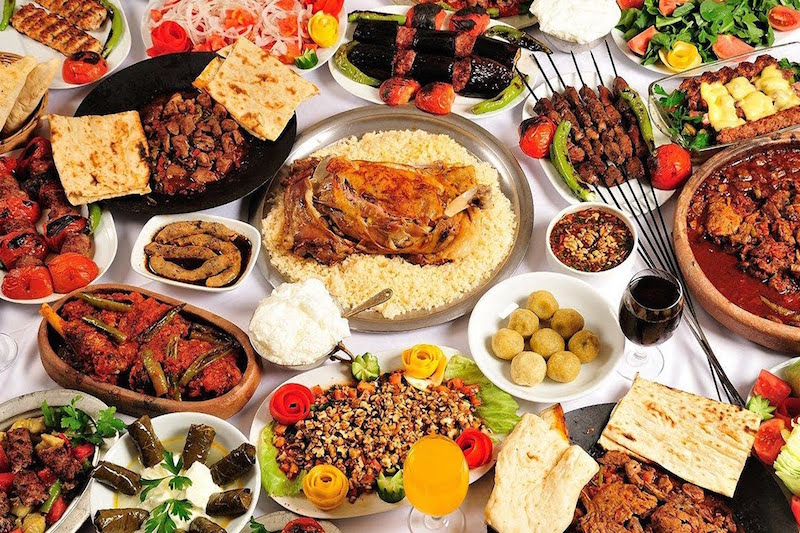"Do not dismiss the dish saying that it is just food. The blessed thing is an entire civilization itself!”
Abdulhak Şinasi

For those who travel to engage in culinary pursuits, the Turkish Cuisine is worthy of exploration. The variety of dishes that make up the cuisine, the ways they all come together in feast-like meals, and the evident intricacy of each craft involved offer enough material for life-long study and enjoyment. It is not easy to discern a basic element or a single dominant feature, like the Italian pasta or the French sauce. Whether in a humble home, at a famous restaurant, or at dinner in a Bey’s mansion, familiar patterns of this rich and diverse cuisine arc always present. It is a rare art, which satisfies the senses while Turkish Cuisine reconfirming the higher order of society community and culture.
A practically-minded child watching Mother cook “cabbage dolma’ on a lazy, gray winter day is bound to wonder: ‘Who on earth discovered this peculiar combination of sautéed rice, pine nuts, currants, spices, and herbs all tightly wrapped in translucent leaves of cabbage each roll exactly half an inch thick and stacked up on an oval serving plate decorated with lemon wedges? How was it possible to transform this humble vegetable to such heights of fashion and delicacy with so few additional ingredients? And, how can such a yummy dish also possibly be good for you?
The modern mind, in a moment of contemplation, has similar thoughts upon entering a modest sweets shop where “baklava’ is the generic cousin of a dozen or so sophisticated sweet pastries with names like twisted turban, sultan, saray (palace), lady’s navel, or nightingale’s nest. The same experience awaits you at a “muhallebici” (pudding shop) with a dozen different types of milk puddings.
One can only conclude that the evolution of this glorious cuisine was not an accident, but rather, as with the other grand cuisines of the world, it was a result of the combination of three key elements, a nurturing environment, the imperial kitchen, Turkish Cuisine and a long social tradition. A nurturing environment is irreplaceable. Turkey is known for an abundance and diversity of foodstuff due to its rich flora, fauna and regional differentiation. Secondly the legacy of an imperial kitchen is inescapable. Hundreds of cooks, all specializing in different types of dishes, and all eager to please the royal palate, no doubt had their influence in perfecting the cuisine as we know it today The palace kitchen, supported by a complex social organization, a vibrant urban life, specialization of labor, worldwide trade, and total control of the Spice Road, all reflected the culmination of wealth and the flourishing of culture in the capital of a mighty empire. Finally, the longevity of social organization should not be taken lightly either The Turkish State of Anatolia is a millennium old and so, naturally is its cuisine. Time is of the essence, as lbn’i Haldun wrote, “The religion of the King, in time, becomes that of the people,” which also holds tine for the King’s food. Thus, the 600-year reign of the Ottoman Dynasty and a seamless cultural transition into the present day of modern Turkey led to the evolution of a grand cuisine through differentiation, the refinement and perfection of dishes, and the sequence and combination of the meals in which they are found.

It is quite rare when all three of the above conditions are met, as they are in French, Chinese and Turkish Cuisine. Turkish cuisine has the added privilege of being at the crossroads of the Far East and the Mediterranean, resulting in a long and complex history of Turkish migration from the steppes of Central Asia (where they mingled with the Chinese) to Europe (where their influence was felt all the way to Vienna). Such unique characteristics and extensive history have bestowed upon Turkish cuisine a rich selection of dishes all of which can be prepared and combined with others to create meals of almost infinite variety; but always in a non-arbitrary way This led to a cuisine that is open to improvisation through development of regional styles, while retaining its deep structure, as all great works of art do. The cuisine is also an integral aspect of the culture. It is a part of the rituals of everyday life. It reflects spirituality in forms that are specific to it, through symbolism and practice.

Anyone who visits Turkey or has a meal in a Turkish home, regardless of the success of the particular cook, is sure to notice the uniqueness of the cuisine. Our intention here is to help the uninitiated enjoy Turkish food by achieving a more detailed understanding of the repertoire of dishes and their related cultural practices as well as their spiritual meaning...
Hi! I am a robot. I just upvoted you! I found similar content that readers might be interested in:
http://www.ottomansouvenir.com/Turkish_Cuisine/an_introduction_to_turkish_cuisine.htm
Downvoting a post can decrease pending rewards and make it less visible. Common reasons:
Submit